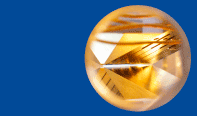We are part of UpQuantVal
The UpQuantVal (Quantum Valley Oberrhein) project is a cross-border INTERREG initiative (2025–2027) in the Upper Rhine region. It aims to build an integrated and sustainable quantum ecosystem by improving cooperation across research, education, specialized infrastructure, technology transfer, and industry engagement between partners in Germany, France, and Switzerland.
UpQuantVal addresses current obstacles to collaboration caused by differing local rules and administrative frameworks. Through joint structuring activities, shared training, coordinated networking, and common communication strategies, the project seeks to enable long-term, effective cooperation and position the Upper Rhine as a competitive innovation region in quantum science.
Our contribution: Trapped-ion quantum systems
At Albert-Ludwigs-Universität Freiburg, our workgroup contributes expertise in trapped-ion platforms: high-fidelity quantum control with microwave and optical fields, precision metrology, and reconfigurable architectures for quantum simulation and computation. We integrate these capabilities into UpQuantVal’s ecosystem by
- demonstrating robust control sequences and calibration methods for scalable trapped-ion operations,
- developing application-oriented protocols for quantum sensing and metrology,
- co-creating training activities and sharing lab know-how and infrastructure with regional partners.
Our Projects:
Future-proof Quantum Control Tools
Trapped ions are among the most promising quantum technologies, offering long coherence times, precise control, and versatile applications in quantum simulation and quantum metrology. While the realization of universal quantum computers still faces major technical challenges, trapped-ion systems are already emerging as powerful quantum simulators. In our approach, several ions are laser-cooled into a Coulomb crystal in a linear Paul trap, followed by ground-state cooling of the motional modes to initialize well-defined quantum states.
The standard toolkit in our experiments includes:
-
Coherent control of the ions’ electronic states (two-level systems ≙ spin-½ ≙ qubit) via lasers and microwaves
-
Conditional optical dipole forces for implementing state-dependent interactions
-
Creation of superposition and entangled states of multiple ions
-
Single-ion/photon detection with high fidelity
To drive these operations with the necessary precision, we are developing next-generation laser systems based on vertical external cavity surface emitting lasers (VECSELs). These systems combine narrow linewidth, long-term frequency stability, and compact, thermally stable design. Integrated birefringent filters, intracavity etalons, and piezo-controlled cavity lengths enable agile tuning to all relevant transitions while maintaining spectral purity. Active stabilization—via temperature-controlled components, PID-locked cavity length, and noise isolation—ensures turnkey operation and minimal downtime.
Such stabilized sources are critical for robust quantum control, especially in experiments at the crossroads of open and closed quantum systems. They enable the generation and manipulation of non-classical states—from spin-squeezed ensembles to Schrödinger-cat superpositions—that enhance sensitivity in quantum sensing protocols. In open-system regimes, stable lasers allow engineered dissipation for dissipative squeezing or steady-state entanglement; in closed-system regimes, they support long-duration coherent evolutions for high-precision measurements.
By merging advanced laser engineering with our expertise in trapped-ion quantum simulation and metrology, this work contributes a key building block to the UpQuantVal project’s vision of a competitive quantum technology ecosystem in the Upper Rhine region.

